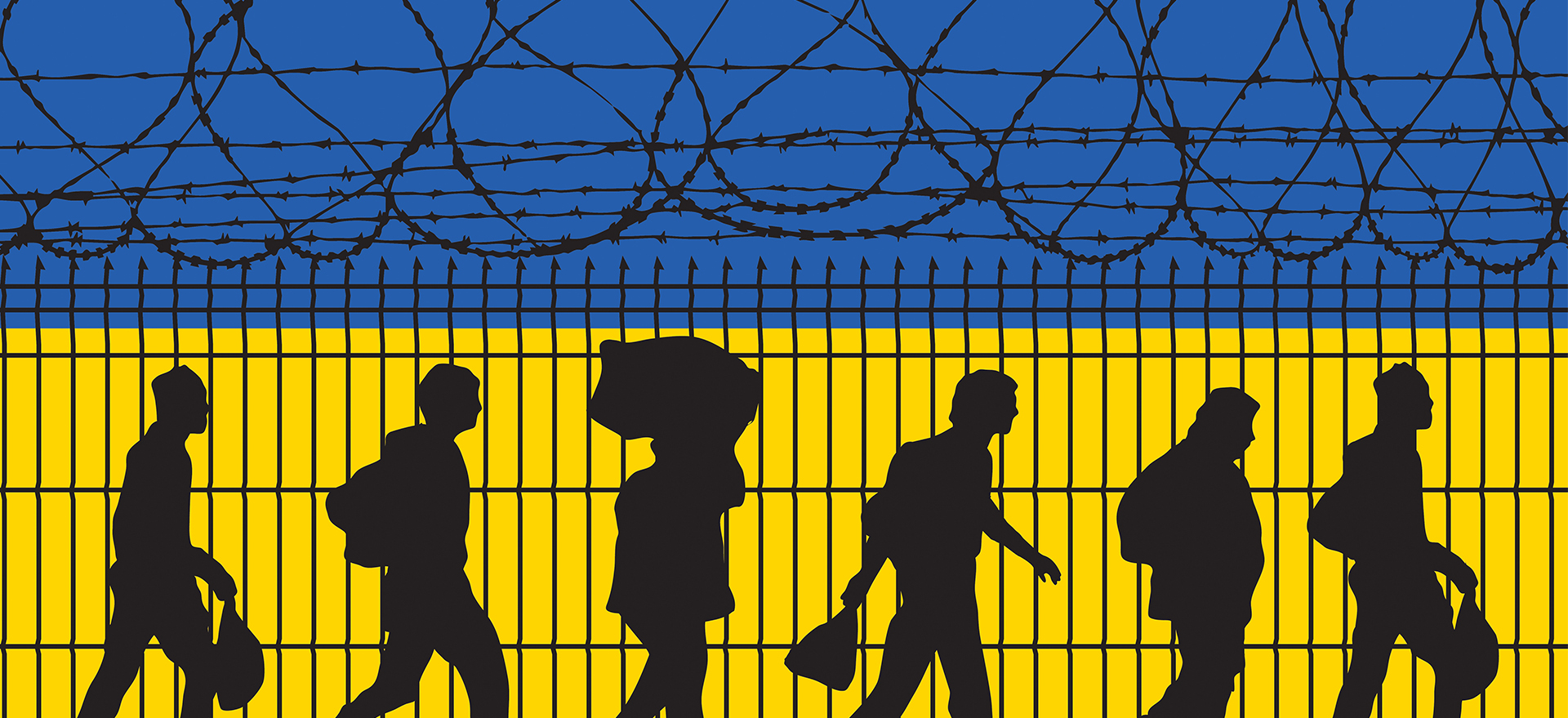Human displacement: rational handling
The way Europe has responded to the crisis in Ukraine should be the baseline for humanitarian assistance – shaped by unity of intent, political will, and goodwill and common sense. Interview with Filippo Grandi, United Nations high commissioner for refugees
How much has the global number of refugees and displaced people grown in recent years?
Exponentially. About 10 years ago UNHCR estimated the number at around 40 million. Last year it had doubled. This year, with Ukraine, we have passed the dreaded milestone of 100 million people in the world forced to leave their homes.
They are almost equally distributed. Europe now is on top with this colossal Ukrainian displacement. The displacement of Syrians is still – at the moment – the biggest refugee crisis. There’s the perennial problem of the Afghan diaspora and displacement, and now one million Rohingya refugees in Bangladesh. Africa has many conflicts that overlap with other phenomena – bad governance, human rights, climate change. Latin America is among the largest areas, with 6 million Venezuelans, and complex flows through Central America to Mexico and the United States. Every region has its own set of crises.
What are the major impacts on the countries of origin, transit and destination?
You have a mix of conflict, good or bad government, climate and other factors generating movements that have the most impact on the immediate neighbours to the crisis. The rhetoric that we hear in rich countries – everybody’s coming to take advantage of our wealth and prosperity – is actually not supported by the data.
Most refugees are not in separate camps but in local communities, using the same services, using the same, often scarce, economic opportunities. UNHCR is trying to shift away from purely humanitarian responses to work with development actors in supporting, for example, national education systems affected by the presence of so many children.
Displacement can also impact climate. When you have huge movements of people in climate-fragile areas, you have deforestation, depleted water resources, and other impacts on land and natural resources. Last year, Uganda’s President Yoweri Musaveni encouraged UNHCR to focus on the environmental impacts of its large population of refugees on the very fragile vegetation, which we are doing much more of in different parts of the world.
How has Russia’s invasion of Ukraine increased the flows?
I fear that the changing focus of this war is not going to reduce displacement. Fierce fighting in urban centres causes the most displacement in developed countries like Ukraine.
The size and speed of this displacement are unprecedented too. In my visits there, this was the message I constantly got from refugees: ‘We were leading absolutely regular lives: children going to school, we were going to work in the morning, taking weekends with the family. All of a sudden this disappeared.’
Many Ukrainians fled thinking they would go back soon. Now we hear more saying, ‘We need to see where our children can go to school and what health systems we can use’.
Two angles are important.
First, Europe was able to absorb almost six million people quickly. Some states have been telling us for years they couldn’t take an extra person. Now there is political will, a sense of solidarity and common action. It’s a good lesson that I hope will be learned.
But I hear some worrying signals. The UK, with its deal with Rwanda to export its asylum responsibility – in the middle of the Ukraine crisis, when everybody was talking about solidarity – went in the opposite direction. This is a bad signal for a G7 member to send to the rest of the world.
Second, in addition to the colossal ramifications of this crisis on food security and energy prices, it may syphon off resources normally devoted to other crises or even development. Where will the money for reconstruction come from?
What contributions has UNHCR made with these unprecedented flows?
We had to really step up. Last year we declared emergencies 40 times as opposed to five or six in a normal year. That means stretching our limited resources. We have between 19,000 and 20,000 staff worldwide. Our Ukrainian operations alone will reach about 1,000 people very soon. That’s a lot in one situation alone, in Europe – where the programmes are not as staff intensive as in other parts of the world, where we need to do much more ourselves because the governments have less capacity.
UNHCR has responsibilities for protection, accommodation, non-food relief supplies and – this is very important in a G7 context – for integrating refugees and displaced people into national services for education and health. Recipient countries need more schools, more teachers, more capacity. They turn to UNHCR, and we turn to development organisations such as the World Bank. It is one thing in a developed country, but what about those with fewer resources? We can’t leave them to try to do this alone.
How can G7 leaders at Elmau best help?
Two points. One, don’t let go of humanitarian and development assistance. Maintain the levels and, if possible, increase them. Two, the way Europe responded to the Ukrainian crisis, offering temporary protection, sharing data, allowing people to move around Europe, was exemplary. Let this be a model. I am a bit worried. In 2016, after the big exodus into Europe, the G7 was seized with matters related to forced migration. This issue is still here, as Ukraine has shown. We just need unity of intent, political will, and goodwill and common sense, and then we can handle the problem of forced global population movements rationally.












